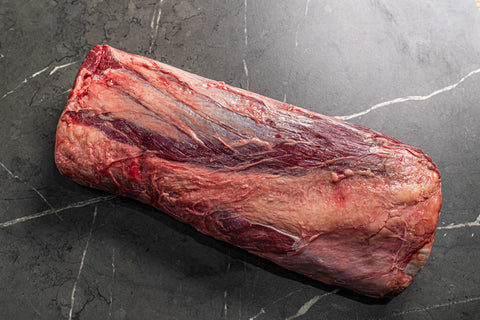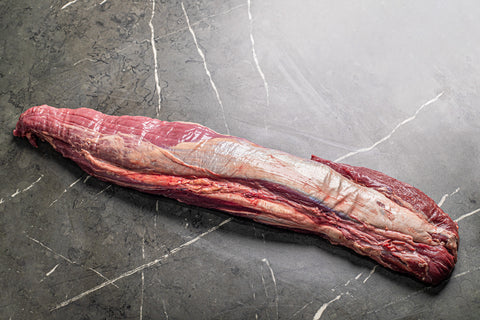Atlantic Salmon vs Pacific Salmon
At Butchershop, we're proud to now offer wild-caught Sockeye Salmon in partnership with SALMONICA®, a company based in the region of Kamchatka, Russia. This peninsula is home to the unique Ozernovskaya Sockeye Salmon, renowned for its exceptional quality. SALMONICA® harvests it from some of the cleanest seas in the world to ensure high-quality products while preserving Kamchatka’s untouched natural environment. In this blog, we’ll explore how wild Sockeye Salmon compares to the more commonly available farmed Atlantic salmon, breaking down key differences in taste, nutrition, and environmental impact to help you make an informed choice.
-
What is Sockeye Salmon?
Sockeye salmon, scientifically known as “Oncorhynchus nerka” and often called red salmon, is a wild species of Pacific salmon found primarily in Alaskan waters and extending to the Pacific Northwest. One of the most important spawning areas for this species is Bristol Bay in Southwest Alaska, recognized as the world’s largest Sockeye salmon habitat. This fish plays a vital role in Alaska's fishing economy and is widely regarded as one of its most valuable catches.
 Wild-Caught Sockeye Salmon
Wild-Caught Sockeye Salmon
For thousands of years, Indigenous communities along the Pacific coast have relied on Sockeye salmon as a key food source. Today, most of the Sockeye available in the market comes from Alaska, where fish populations remain strong thanks to sustainable fishing practices. In contrast, stocks in the Pacific Northwest have declined, largely due to environmental disruptions like dam construction and urban sprawl. This decline has deeply affected Native American communities in the region, for whom salmon holds not only nutritional importance but deep cultural significance.
-
What is Atlantic Salmon?
Atlantic salmon is a familiar name in seafood markets, but what many shoppers may not realize is that any Atlantic salmon they’re buying is farmed, not wild. Wild populations of Atlantic salmon have become endangered, with their habitats now limited to a few rivers in Maine and parts of eastern Canada. Due to these critically low numbers, wild Atlantic salmon cannot legally be harvested, and ongoing conservation efforts aim to restore their natural populations.
To meet global demand, aquaculture has stepped in. Today, farmed Atlantic salmon accounts for nearly 70% of the salmon consumed worldwide. These fish are raised in aquaculture operations that span many countries, and while they help alleviate pressure on wild fish, they come with environmental trade-offs. Open-net pens used in marine farming can damage local ecosystems and allow farmed salmon to escape and compete with native species. One major incident in 2017 brought these concerns into the spotlight. A net pen failure in Puget Sound released thousands of Atlantic salmon into Pacific waters, triggering ecological alarms and public outcry. As a result, Washington state banned the farming of Atlantic salmon in its public waters.
-
Why is Sockeye salmon considered superior to farmed Atlantic salmon?
When it comes to health and environmental impact, wild Sockeye salmon is a better choice than farmed Atlantic salmon. Sockeye, especially from Alaska, has a rich, natural diet that gives it superior flavor and higher nutritional value.
Beyond environmental issues, there are noticeable differences between farmed Atlantic salmon and wild species like Sockeye. Farmed salmon tend to be paler in color and milder in taste, largely due to their artificial diets, which may include fish oil, soy, and corn. This contrasts with wild salmon, which feed on krill and other marine life that contribute to their rich flavor and deep red hue.
-
Taste Comparison: Wild Sockeye and Farmed Atlantic
Sockeye salmon offers a bold, rich flavor that stands out among wild salmon varieties. Its dense, meaty texture and vibrant taste come from its natural diet and active life in the wild. Because it's leaner than other types, it delivers flavor without excess fat, making it ideal for simple preparations or pairing with strong seasonings. It’s also a great source of omega-3 fatty acids.
Farmed Atlantic salmon is milder in taste and has a softer, fattier texture. Its diet, often made up of soy and corn-based pellets, leads to an unnatural fat balance, with more omega-6 than omega-3s. This not only affects the fish’s flavor and nutritional quality but may also have negative health effects for regular consumers. Compared to Sockeye, it’s less flavorful and less nutrient-dense.











